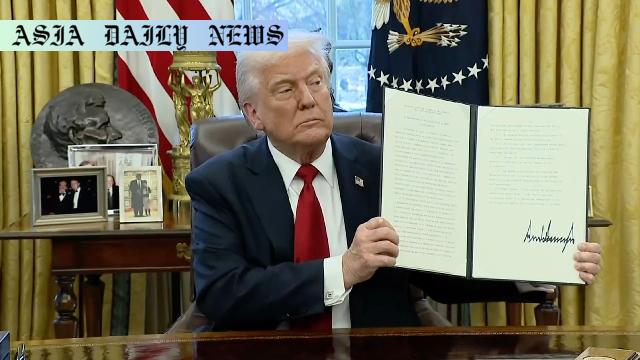Tariff boosts domestic production but impacts international trade significantly, especially Japan’s economy.
US announces 25% tariffs on vehicle and parts imports citing national security.
Japan heavily impacted as auto exports to US accounted for $40 billion in 2024.
US aims to boost domestic production while other nations consider countermeasures.
Japan plans discussions for exclusion and possible retaliatory steps.

Trump’s Tariff Announcement and Its Objectives
The recent announcement by US President Donald Trump of a 25% tariff on vehicle and parts imports marks a significant shift in trade policy aimed at revitalizing domestic automobile production. Citing national security under Section 232 of a 1962 law, the levy primarily targets imports to incentivize US-based manufacturing. Trump emphasized the benefits for companies building cars within the country, highlighting the role of tariffs in ensuring industrial growth and securing employment on home soil. Officials estimate the policy could generate $100 billion annually, serving as a financial boost for the nation’s economy.
Economic Implications for Global Partners
For nations relying on automotive exports to the US, particularly Japan, the impact could be significant. In 2024 alone, Japan exported vehicles worth $40 billion to the United States, capturing 28.3% of total Japanese exports to the country. With the tariffs raising costs, consumers may face higher prices, potentially affecting sales and profitability for foreign car manufacturers. Japanese automakers, who rely heavily on US revenue, face considerable hurdles, while Japan as a whole deliberates on the best course of action to protect its economic interests amid these evolving trade dynamics.
Japan’s Potential Response and Negotiation Strategy
Prime Minister Ishiba Shigeru has expressed Japan’s intention to examine all potential countermeasures to safeguard its national interest. Stressing the scale of Japan’s investment in US-based facilities, Ishiba seeks assurance from Washington that the tariffs might not apply uniformly to all countries. While encouraging dialogue, he also indicated readiness to take decisive actions if negotiations fail. Japan’s approach may center on leveraging its contributions to the US economy, emphasizing the jobs created by Japanese manufacturers within American borders, and advocating for a more flexible tariff policy.
International Trade and the Bigger Picture
While the new levy aims to strengthen US manufacturing, it reflects broader changes in global trade relationships. The ripple effects of such policies extend beyond the auto industry, influencing geopolitical alliances and economic structures. Other nations impacted by the tariffs could join Japan in pursuing collaborative legal or retaliatory measures, potentially leading to heightened tensions or reforms within international trade agreements. With global economies interconnected, the long-term implications of protectionist policies demand close observation as nations assess opportunities for mutual growth and cooperation amid diverging priorities.
Commentary
Analyzing the Rationale Behind Higher Tariffs
President Trump’s decision to impose a 25% tariff on automobile imports underscores his administration’s prioritization of domestic production and job creation. While the executive order positions the US as a stronger player in the automotive sector, the potential disruptions to established trade flows cannot be overlooked. The notion of safeguarding national interests and creating industrial resilience is noteworthy, but the broader consequences on consumer prices and international relations raise valid concerns that need to be addressed thoughtfully.
The Risks to International Cooperative Trade
Japan’s predicament brings to light the vulnerabilities of economies intertwined with American markets. As one of the largest exporters to the US, Japan’s dependency on the automotive trade places it in a difficult position. With tariffs potentially causing sharp declines in sales, secondary effects like workforce reductions or reduced profits for manufacturers remain areas of concern. Balancing these challenges with diplomatic negotiations will be essential for Japan to navigate this critical juncture effectively.
A Path Forward Requires Collaboration
The global economy functions on the trust and efficiency of partnerships. While protectionist measures may yield short-term gains, their potential to disrupt long-established trade relationships could hinder progress. Diplomatic efforts should emphasize creating mutual benefits, recognizing the interdependence of national economies. Tariffs ought to spur innovation and competitiveness rather than create divisions. The challenge lies in designing policies that champion industrial growth while ensuring fair collaboration—a challenge both nations must address thoughtfully.


